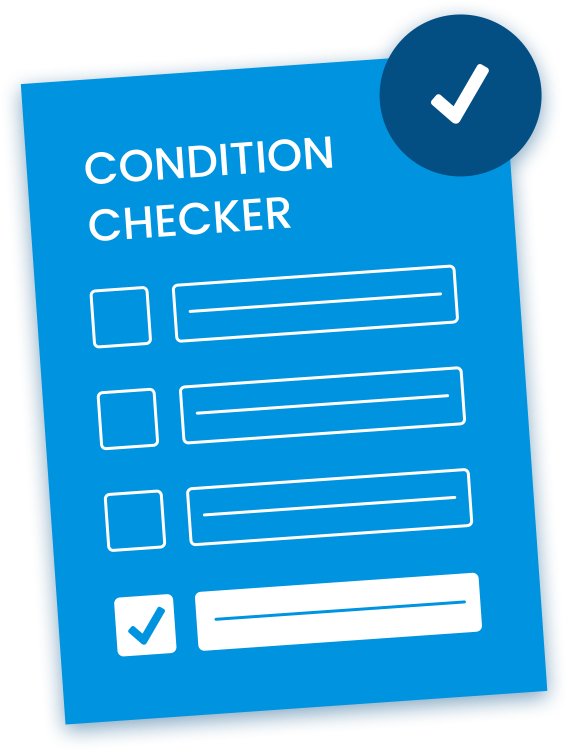Degenerative Disc Disease
Find out which possible conditions you may be suffering from by trying our 2-min Guided Pain Assessment Form!





Degenerative disc disease refers to a condition of spinal degeneration that becomes more common with increasing age. Disc degeneration is a common source of back pain among middle-aged and older adults and affects more than 3 million people in the U.S. each year. Fortunately, our minimally invasive treatment approaches can improve painful symptoms and restore a full range of motion.
Common conditions accompanied by disc degeneration include a bulging disc, a herniated disc, spinal stenosis (narrowing of the spinal canal) or osteoarthritis. These conditions put additional pressure on nerves, which leads to serious, chronic pain in the back, neck, legs and arms. Disc degeneration occurs most commonly in the cervical vertebrae located in the neck region or the lumbar vertebrae in the lower back. Pain from disc degeneration can vary widely from person to person, as some experience excruciating pain while others experience only mild pain with few symptoms.
Are you experiencing significant back pain and worry you may have degenerative disc disease? Try our easy Condition Checker to diagnose your symptoms and get started on your journey toward a pain-free life.

Find your condition with our 2-minute Condition Checker.
While degenerative disc disease mostly affects the lumbar spinal area (lower back) and the cervical spine area (neck region), it can also affect any part of the spine. You will experience pain depending on what part of the spine is affected. For instance, if you experience pain in your lower back, you may have a damaged disc at that site.
Other times, the pain may radiate to other parts of your body. There are nerves that come from the spine to other regions of the body. So, if the damaged disc is creating pressure on a nerve that is branching to your legs, you may feel pain in your legs as well. The nerves will send the message of pain, which is known as radiculopathy in medical terms.
Usually, people with degenerative disc disease symptoms will experience severe back and neck pain. Other times, this pain might get worse. The main symptom to look out for is pain. So, you should focus on the pain and whether it gets better or worse. People with degenerative disc disease usually have the following patterns:
If you suspect you may have disc degeneration disease, you should see a doctor right away. Here are some warning signs that require immediate medical help:

Discover which treatment options are right for you with our Treatment Finder.
Initial treatment of degenerative disc disease often includes a conservative approach to manage pain and strengthen the back. Pain medication, physical therapy and lifestyle changes, such as increasing movement throughout the day or gentle stretching exercises, may be sufficient to ease symptoms.
When conservative approaches are not enough to manage pain, surgery for degenerative disc disease is a viable treatment approach. Artificial disc replacement — a minimally invasive, two-hour outpatient procedure — is one of the best choices and most common procedures performed based on conditions resulting from degenerative disc disease.
Dr. Katzman, lead surgeon at NJ Spine & Orthopedic, has successfully performed over 250 artificial disc replacements and is dedicated to developing advanced methods to provide minimally invasive solutions for degenerative spine issues.
His team of spine experts at NJSO perform most procedures on an outpatient basis using minimally invasive techniques.
Are you experiencing chronic back pain from degenerative disc disease or an accompanying condition? You don’t have to go through life tolerating your pain any longer — try our Candidacy Verification tool and find out if you qualify for one of our minimally invasive surgical options.

Determine your eligibility with our Candidacy Verification.
CONTACT
Phone: 855.586.2615
Current Clients: 855.706.1011
NJ Spine and Orthopedic is dedicated to delivering minimally invasive laser spine surgeries to eliminate the pain, discomfort, and dysfunction of numerous conditions of the neck and back.
OVERVIEW
LOCATIONS
Copyright © 2025 NJ Spine & Orthopedic